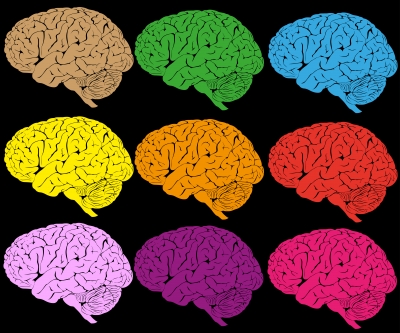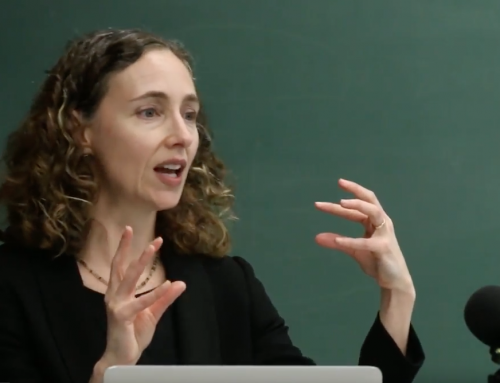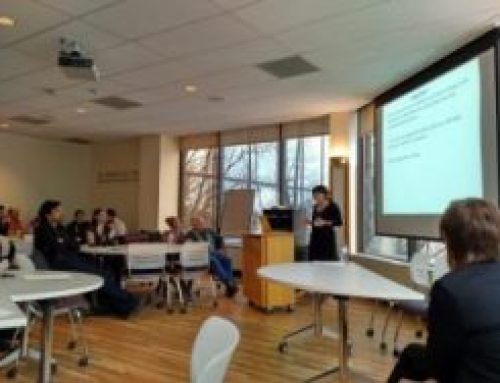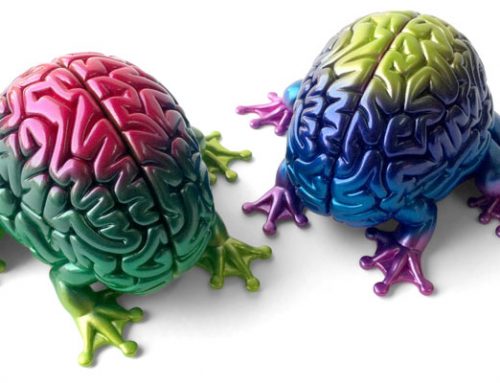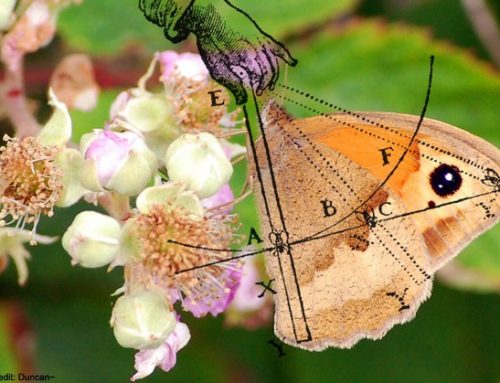This week we are taking a break from our interviews with post doctoral fellows to interview Professor Tim Bayne, an endowed chair in the Philosophy of Neuroscience at Western University and a member of the Rotman Institute of Philosophy. Before coming to Western, Bayne worked at the University of Manchester, the University of Oxford, Macquarie University, the Australian National University, Ecole Normale Supérieure and Institut Jean Nicod, and the University of Canterbury. Currently, he is the principle investigator for The Architecture of Consciousness, a research program funded by the European Research Council. Bayne is an expert in the philosophy of mind, psychology, and consciousness as well as the philosophy of religion.
Amy Wuest: What is the philosophy of mind and how does it contribute to our understanding of consciousness? How does this work inform scientific research?
Tim Bayne: One can think of the philosophy of mind as including within its scope any kind of philosophical reflection on the nature of minds and mentality. That’s a pretty broad conception of the philosophy of mind however, and many philosophers would want to distinguish between the philosophy of mind strictly speaking, which can be understood as a branch of metaphysics, and philosophy of psychology/cognitive science/neuroscience, which can be understood as a branch of the philosophy of science. Labels don’t really matter, but the point is that some philosophical questions about the nature of minds and mentality don’t really have much connection with scientific research (those are the questions in which philosophers of mind narrowly construed are interested in), whereas others do. How does all of this relate to scientific research? As I see things, the work of philosophers is more robustly informed by scientific research than vice-versa, but the kinds of scientific issues to which philosophers like myself can (I hope!) make a useful contribution are conceptual and methodological. In my own research I aim to make a contribution of the science of consciousness by distinguishing different aspects to consciousness that have not always been appreciated in the scientific literature and by pointing out ways in which certain methods might be more limited or problematic than scientists have realized.
AW: The “architecture of consciousness” is a central theme in your research. What is the architecture of consciousness and how does understanding it contribute to philosophical and scientific accounts of the mind?
TB: The ‘architecture of consciousness’ is my grandiose term for the general structural features of consciousness. For the most part the science of consciousness has focused on the search for the neural underpinnings of particular kinds of contentful states, such as seeing motion. I think that this kind of research is fine as far as it goes, but I think that we are likely to make more progress in identifying the mechanisms underlying consciousness by focusing on the structural features of consciousness, such as its unity or the relationship between consciousness and attention. Here, we need to both identify what the structural features of consciousness are, and we then need to provide account of how these features of consciousness can be explained.
AW: You also explore levels of consciousness. How is this related to your work on the architecture of consciousness?
TB: The so-called ‘levels’ of consciousness are one of the five structural features of consciousness that I’m exploring in my Architecture of Consciousness project. (The other four features are the unity of consciousness, the subjectivity of consciousness, the temporality of consciousness, and the selectivity of consciousness—that is, the fact that certain kinds of contents can be consciously represented whereas others cannot.) The notion of a level of consciousness has its natural home in medicine, where it is used to refer to the kinds of global alterations in consciousness that are seen in association with (e.g.) anesthesia, epileptic absence seizures, the vegetative state, and REM dreaming. I myself am not keen on the term ‘levels’, for it suggests that changes in a subject’s global state of consciousness can be modeled in terms of variation along a single dimension, and I think that that assumption is problematic. I prefer to refer to levels of consciousness as ‘global states of consciousness’. Although this term is more cumbersome than ‘levels’, it leaves open the possibility that these states need to be understood in multidimensional terms.
AW: Most people are familiar with delusions and self-deception (perhaps they’ve even engaged in the latter from time to time). But, many of us don’t consider the possible connections between these types of beliefs; however, that connection is the very subject that you and your co-editor, Jordi Fernández, explore in Delusion and Self-Deception: Affective and Motivational Influences on Belief Formation (2008). What inspired you to study these topics?
TB: We were inspired by the fact that there are many points of contact between delusion and self-deception, and yet the literatures on the two topics have largely proceeded along parallel tracks. Both delusion and self-deception raise questions about the relationship between belief, evidence, motivation, and action. For example, one can ask whether self-deceived or deluded individuals really believe what they appear to believe, or whether the mental states that they are in should be classified in some other way (perhaps as states of imagination?), and are at most quasi-beliefs. This volume also explores ways in which models of belief-formation might illuminate delusion and self-deception. When we put this volume together neuropsychiatry had only recently begun to explore the role of motivational factors in the formation of delusion, whereas such factors had been extensively examined in connection with the study of motivated reasoning and self-deception.
AW: In the same work, you describe delusions and self-deceptions as “pathologies of belief formation.” What is the traditional way of diagnosing such pathologies and how does your view improve upon it?
TB: Delusions have often been referred to as pathologies of belief, whereas self-deception is less often referred to in these terms. However, it seemed to us useful to group the two phenomena together in this way as core instances in which the mechanisms of belief-formation appear to have gone awry. Of course, to think of delusion and self-deception as pathological phenomenon is certainly contentious, and there is some plausibility in the idea that there are contexts in which these states are adaptive. The question of how delusion and self-deception are traditionally diagnosed is a tricky one, and much ink has been spilt over it and the related question of how they should be diagnosed. I think the ‘reasonable person’ test captures our intuitions here quite well: we ask ourselves whether a reasonable person would have formed the belief in question given their evidence and cultural context. If the answer to this question is plausibly ‘no’, then we conclude that the individual in question is either self-deceived or deluded. Of course, there are various ways in which such a conclusion might be unjustified. For one thing, the individual might have access to evidence of which we are unaware.
AW: In addition to your expertise in the subjects discussed above, you’re also interested in the philosophy of religion. What sparked your interest in this field? Does this interest connect with your work in the philosophy of mind?
TB: I’ve always been interested in philosophy of religion; in fact I went to graduate school with the intention to focus on philosophy of religion. (I soon realized that my fundamental interests were in the philosophy of mind, however!) For the most part my work in the philosophy of religion has been independent of my interests in the philosophy of mind, although I did once write a paper on models of the incarnation that drew on accounts of the structure of consciousness in the split-brain syndrome. One point of contact between the philosophy of religion and the philosophy of mind that does interest me concerns the psychological roots of religion: why is it that religious beliefs come so very naturally to human beings? I’m currently writing a book on the philosophy of religion for OUP’s Very Short Introduction series in which I briefly touch on this question.
AW: Along with Professor Jacqueline Sullivan and Professor Michael Anderson, you organized the Rotman 2016 annual conference Rethinking the Taxonomy of Psychology. In your opinion, what was the most important outcome of the conference?
TB: One of the exciting things about the conference was seeing the work on this topic that doctoral students and post-docs were doing. My hope is that the conference will stimulate a new generation of researchers to consider questions relating to the taxonomy of psychology. This is the fourth event on this topic that I’ve been involved in organizing, and it was great to see these issues finally getting some traction. Sometimes one really needs a critical mass of people working on a topic to get somewhere with it, and I think we’re finally reaching that critical mass with this topic.
AW: Earlier this year, you were awarded a prestigious Australian Research Council Future Fellowship at Monash University. What sort of your research will you be pursuing in your new position, and to what extent will your collaborations with researchers here at the Rotman Institute and Western remain in place?
TB: The aim of my Future Fellowship project is to develop an account of how we should go about detecting and measuring consciousness. We currently lack reliable and trustworthy ways of distinguishing the presence of consciousness from its absence, with the result that there is much uncertainty about the distribution of consciousness in the world. We all agree that ordinary human beings are conscious (although even here there is uncertainty about such conditions as sleep), but there is little agreement about whether (say) neonates and fetuses are conscious, or about which kinds of non-human animals are conscious. More generally, it is unclear what evidence is relevant to determining whether a creature is conscious. I will be exploring the idea that some of the challenges in this area can be met by treating consciousness as a natural kind, and I will be looking at whether the science of consciousness can learn from other sciences about how to develop robust measures. I expect to return to Western regularly, and will be looking to collaborate on issues related to this project with colleagues at both the Rotman Institute and the Brain and Mind Institute.

